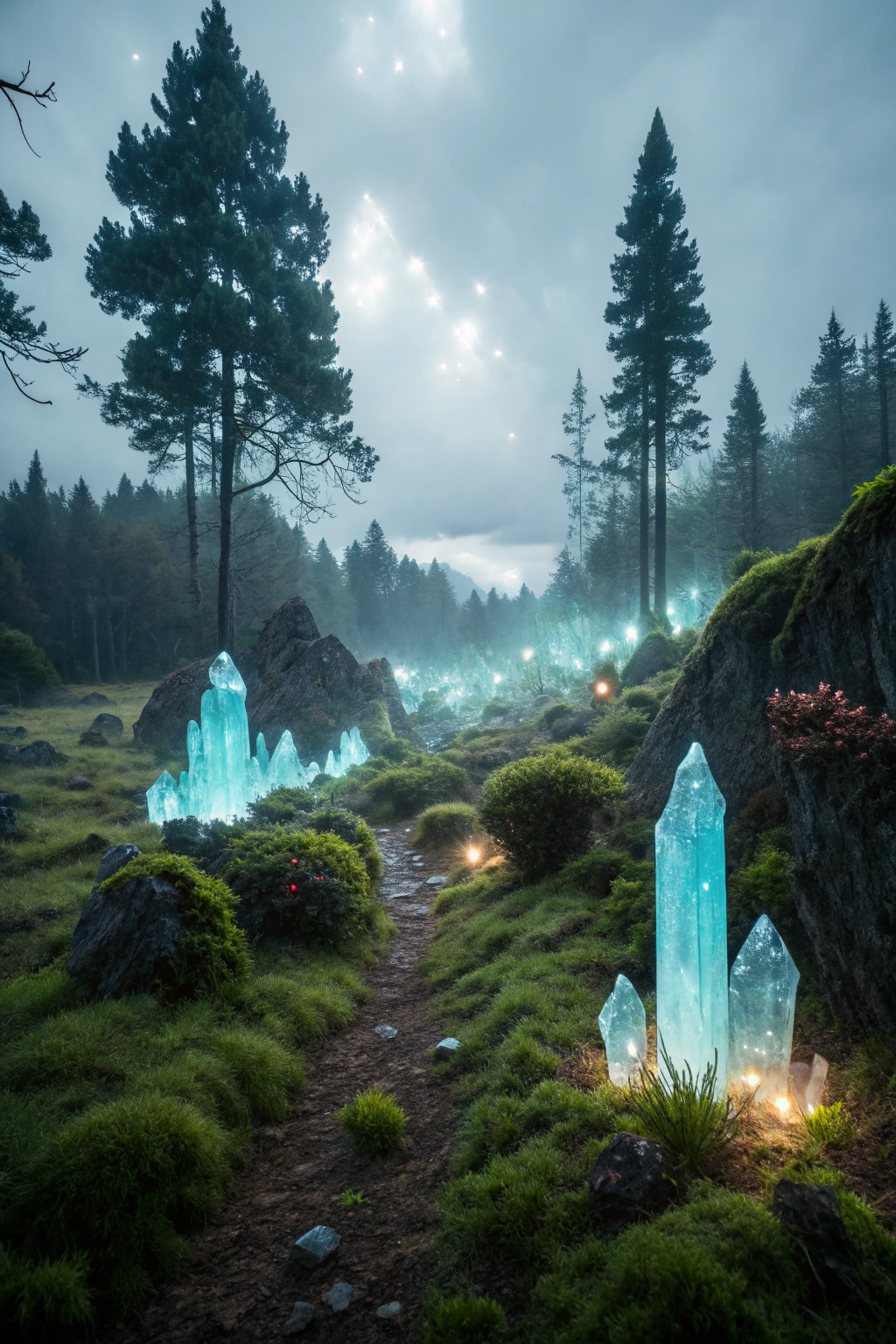Introduction
Beyond the familiar landscapes of text prompts and image generators lies a new frontier of digital creation. The ability to generate entire virtual environments is no longer science fiction; it’s a rapidly advancing reality. For developers, artists, and futurists, the call to explore hidden AI-generated worlds you must see represents the next great leap in digital interaction. These aren’t just static images; they are dynamic, immersive spaces crafted by algorithms, promising to revolutionize everything from gaming and entertainment to industrial simulation and scientific research.
Background and Evolution of Explore Hidden AI-Generated Worlds You Must See
The concept of machine-created environments has its roots in procedural content generation (PCG), a technique used in video games for decades to create vast, unique landscapes and levels, as seen in classics like Elite and modern marvels like No Man’s Sky. However, traditional PCG relied on predefined rules and templates. The current paradigm shift is fueled by deep learning and generative adversarial networks (GANs), allowing AI not just to assemble but to imagine and create novel worlds from scratch. This evolution from rule-based systems to true generative AI enables a level of detail, realism, and creative unpredictability previously thought impossible. As detailed by pioneers in computational creativity, these models are learning the fundamental patterns of our world to build entirely new ones, making the initiative to explore hidden AI-generated worlds you must see more compelling than ever.
Practical Applications of Explore Hidden AI-Generated Worlds You Must See
Use Case 1: Hyper-Realistic Game and Metaverse Development
The most immediate application is in the entertainment sector. Game development studios and metaverse platforms are leveraging generative AI to drastically cut down on asset creation time. Instead of manually designing every tree, building, and texture, developers can task an AI with generating entire ecosystems based on high-level creative direction. Epic Games’ Unreal Engine 5, with its Nanite and Lumen technologies, already showcases the power of rendering immensely detailed worlds. The next step, which is already underway, is using AI to populate those worlds with unique, stylistically consistent content, enabling smaller teams to build experiences of a scale previously reserved for AAA studios. This empowers creators to explore hidden AI-generated worlds you must see as a core part of their development process.
Use Case 2: Advanced Industrial and Scientific Simulation
Beyond entertainment, AI-generated worlds are critical for creating ‘digital twins’—virtual replicas of real-world systems, cities, or factories. Companies like NVIDIA with its Omniverse platform use these simulations to test autonomous vehicles in millions of different weather and traffic scenarios, a task impossible to replicate safely in the real world. In medicine, researchers can generate virtual cellular environments to simulate drug interactions. This capability allows for exhaustive testing and data collection in a risk-free, cost-effective setting. The drive to explore hidden AI-generated worlds you must see is therefore a key factor in accelerating innovation and safety in critical industries.
Use Case 3: Personalized Art and Immersive Storytelling
Generative AI is unlocking new forms of narrative and artistic expression. Imagine an interactive story that generates its world around you based on your choices and emotional responses, detected through biometric feedback. Artists are already using tools like Midjourney and Stable Diffusion to create conceptual art for fantastical places. The next evolution is to make these spaces fully interactive and navigable. This allows for truly personalized experiences where each user can explore hidden AI-generated worlds you must see that are tailored specifically for them, opening up a new era of bespoke digital art and storytelling.
Challenges and Ethical Considerations
The rise of AI-generated worlds is not without its challenges. A primary concern is inherent bias in the training data, which could lead to a lack of diversity and representation in these new virtual spaces, reinforcing real-world stereotypes. Furthermore, the immense computational power required to train these models and run the simulations presents a significant environmental concern. Misinformation is another risk; hyper-realistic generated worlds could be used to create convincing but fake scenarios for malicious purposes. As these spaces become more integrated with our lives, questions of data privacy, digital ownership, and governance will become paramount. Establishing ethical guidelines and regulatory frameworks is crucial to ensure these powerful tools are developed and deployed responsibly.
What’s Next for Explore Hidden AI-Generated Worlds You Must See?
In the short term, we will see more sophisticated tools integrated directly into existing creative software, making generative world-building accessible to more creators. Mid-term, expect the emergence of AI « world directors » that can dynamically alter and expand virtual environments in real-time based on player actions, creating truly endless and unpredictable experiences. Looking long-term, the lines will blur between digital and physical realities. Startups like Scenario.gg are already automating the creation of game assets, while major players are focused on building the foundational models for entire 3D worlds. The ultimate goal is a persistent, interconnected metaverse where users can seamlessly explore hidden AI-generated worlds you must see, each with its own unique physics, ecology, and history.
How to Get Involved
Diving into this field is more accessible than ever. Start by experimenting with AI image generators like Midjourney or Leonardo.ai to practice visual prompting and conceptualization. For those with a technical background, explore open-source projects on GitHub related to procedural generation and generative models. Engaging with communities on platforms like Discord and Reddit dedicated to AI art and virtual world creation can provide valuable insights and collaboration opportunities. For a curated look at how these technologies impact various sectors, check out our hub of tech analysis and guides.
Debunking Common Myths
Myth 1: AI will replace human creativity.
Clarification: AI is a tool, not a replacement. The most compelling generated worlds are the result of a collaboration between a human’s creative vision and the AI’s generative power. AI handles the laborious tasks, freeing artists and designers to focus on high-level direction and storytelling.
Myth 2: You need to be a coding expert to create AI worlds.
Clarification: While deep customization requires technical skill, a new wave of user-friendly platforms and no-code tools is emerging. These platforms allow anyone to generate and explore hidden AI-generated worlds you must see using natural language prompts and simple interfaces.
Myth 3: AI-generated worlds are just random and chaotic.
Clarification: Early generative systems could be chaotic, but modern AI models can be guided with remarkable precision. Through sophisticated prompting, style guidance, and iterative refinement, creators can exert significant control over the aesthetic, logic, and structure of the generated environment.
Top Tools & Resources for Explore Hidden AI-Generated Worlds You Must See
- NVIDIA Omniverse: This is a powerful platform for creating and simulating industrial-grade digital twins and hyper-realistic virtual worlds. It matters because it’s at the forefront of connecting diverse 3D design tools into a single, collaborative environment.
- Unreal Engine 5: While a game engine, its advanced features for procedural content generation and high-fidelity rendering make it an essential tool. It helps you build and experience the generated worlds, turning concepts into interactive realities.
- Midjourney/Stable Diffusion: These are essential for the conceptual phase. Use them to rapidly prototype visual ideas, create mood boards, and define the artistic style of your world before committing to full 3D development. They allow you to explore hidden AI-generated worlds you must see in a visual format first.

Conclusion
We stand at the edge of a new creative universe. The ability to explore hidden AI-generated worlds you must see is redefining the boundaries of digital content, simulation, and art. From accelerating game development to solving complex industrial challenges, these AI-crafted environments are set to become an integral part of our technological future. The journey is just beginning, and the worlds waiting to be discovered are limited only by our collective imagination. 🔗 Discover more futuristic insights on our Pinterest!
FAQ
What is Explore Hidden AI-Generated Worlds You Must See and why is it important?
This phrase refers to the emerging technological capability of using artificial intelligence to create complex, detailed, and often interactive virtual environments from scratch. It’s important because it automates and scales a highly complex creative process, promising to revolutionize industries like gaming, film, industrial design, and scientific research by enabling rapid prototyping and limitless content creation.
How can I start using Explore Hidden AI-Generated Worlds You Must See today?
The easiest entry point is through AI image generators like Midjourney or Leonardo.ai to create 2D concepts of these worlds. For a more interactive experience, explore games that utilize procedural generation, or, if you have technical skills, experiment with generative tools within platforms like Unreal Engine 5 or Blender.
Where can I learn more?
You can learn more by following publications like WIRED and MIT Technology Review, joining online communities on Reddit (e.g., r/aiArt) or Discord, and following the progress of key companies in the space like NVIDIA, Epic Games, and emerging AI startups.
